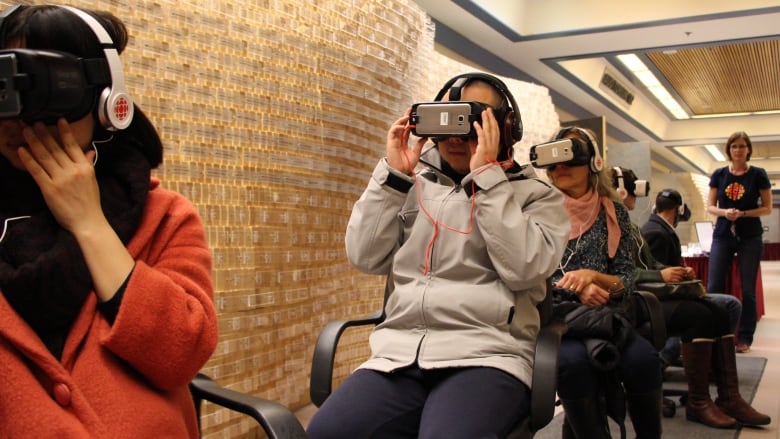Explore B.C.'s notorious Highway of Tears in new virtual reality documentary
CBC Radio One's The Current uses VR to tell the story of Ramona Wilson, Indigenous girl missing since 1994

When Matilda Wilson's daughter Ramona went missing in 1994, Wilson never imagined that 22 years later, she would still be searching for answers about what happened.
Ramona Wilson was 16 when she disappeared from Smithers, B.C., on her way to meet a friend in a nearby town. Like so many others from the small community in northern B.C., she had to travel along Highway 16, which has become known as the Highway of Tears. Her body was found nearly a year later, but her murder remains unsolved.
The RCMP have acknowledged that 18 girls and women have gone missing or been murdered along the stretch of highway between Prince George and Prince Rupert and nearby routes since 1969. Indigenous leaders say that number is closer to 50.
"Even now, I lose my breath just thinking about the mothers, that there is no trace of their daughters," Wilson said.

The story of Ramona's disappearance and her mother's search for answers is told in a new light in a virtual reality documentary produced by CBC Radio One's The Current that gets its first wide release today.
CBC's first virtual reality documentary, Highway of Tears transports viewers to the Wilson home and then onto the notorious stretch of Highway 16, providing a visceral experience of the landscape and the personal tragedies that haunt that landscape and that have affected so many Indigenous people in Canada. The documentary was directed by Anishinaabe filmmaker Lisa Jackson.

How to watch
The best way to watch the Highway of Tears documentary and get the full virtual reality experience is to use an Oculus Rift or Gear VR headset.
You can also view a 360º video version of the documentary on a mobile device using the YouTube app or by visiting the The Current's Facebook page.
Android users can download the CBC VR app in the Google Play store; the iOS app for iPhone users is here.

VR doc to be shown across Canada
On Sept. 1 of this year, the federal government launched a national inquiry into missing and murdered Indigenous women and girls. The inquiry came in the wake of emotional pleas from relatives and community members, news stories and police reports that underscored what is now recognized as the decades-long vulnerability and victimization of Indigenous women in Canada.
Their stories and the sheer number of women affected — estimated at anywhere from hundreds to thousands — have captured the attention and support of a wide spectrum of Canadians.

Against this backdrop, The Current launched its virtual reality documentary at a public forum Oct. 13 in Prince George, a community with close links to the highway and the tragic stories associated with it.
More than 250 people attended, many of whom came with their own personal stories of loved ones gone missing or affected by violence.
"The exploitation and the abuse, the systemic racism … Every day, you're fighting, every day. You're not treated equal," Rena Zatorski, a Lheidli T'enneh band member, told host Anna Maria Tremonti.
The Current plans to show the documentary at a series of town halls across the country over the coming months.
Go behind-the-scenes of a new VR doc from <a href="https://twitter.com/TheCurrentCBC">@TheCurrentCBC</a> about one young woman who went missing in 1994 <a href="https://twitter.com/hashtag/MMIW?src=hash">#MMIW</a> <a href="https://t.co/FlobSuGhVX">https://t.co/FlobSuGhVX</a> <a href="https://t.co/drSTBsR7LE">pic.twitter.com/drSTBsR7LE</a>
—@CBCDocProject